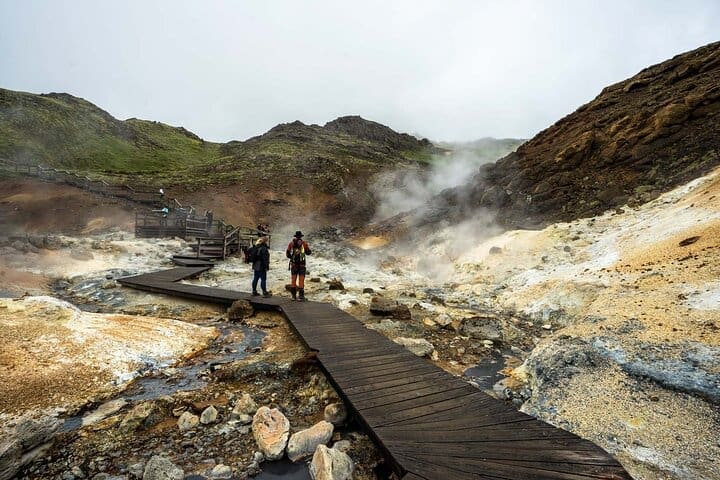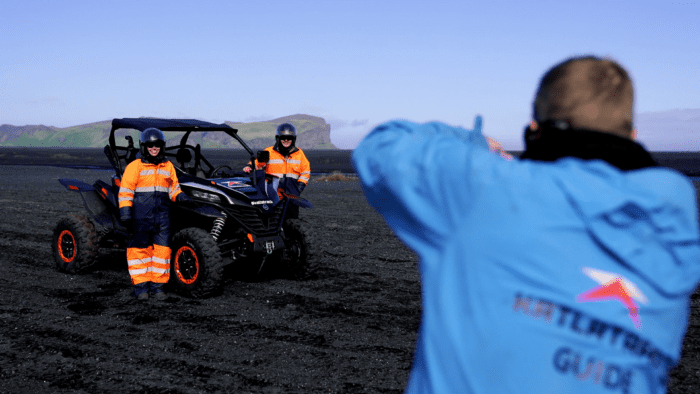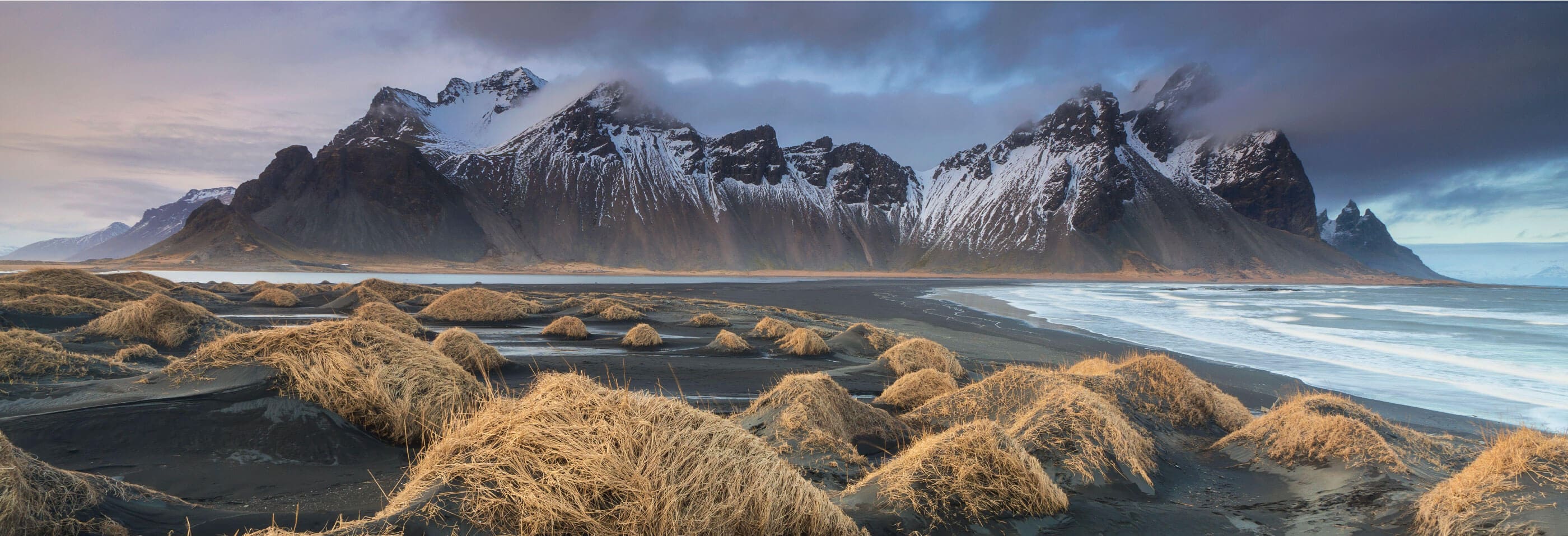
Volcano Area Tour, Grindavík Town, Reykjanes Lava Fields and Hot Springs
Come sightseeing with us on the Reykjanes peninsula, an extraordinary area with lots of activity in the ground. Finish off with a perfect relaxation in the newest spa in Iceland, The Sky Lagoon.
Join us for a tour of the Reykjanes Peninsula, an area marked by powerful geological activity. You’ll see Iceland’s youngest lava fields and visit the town of Grindavík, where devastating earthquakes split roads, lava flows damaged houses, and residents were forced to evacuate.
During the tour, you’ll explore a geothermal area with numerous hot springs, admire the scenic lake Kleifarvatn, see Iceland’s oldest lighthouse, cross the bridge between continents, and ancient lava fields covered in soft, vibrant moss, all over.
!!! The Reykjanes Peninsula, especially around Grindavík, is currently in an active state. Although lava isn’t flowing at the moment, it’s likely to resume. Should volcanic activity cause area closures, we may need to adjust our itinerary but will stop at the next possible viewpoint to see the eruption, if accessible.
Itinerary
The Lake Kleifarvatn
Kleifarvatn is the largest lake on the Reykjanes peninsula and a sight to behold. The road along the lake is probably one of the most under rated tourist roads int the country which hugs the lake’s shore. The tall mountains on the other side, make the drive alongside the lake nearly as fun as stopping to admire it from various vantage points. Fun Fact: In the year 2000, Kleifarvatn lost 20% of its water, when a fissure opened after an earthquake. The water drained into the nearby North Atlantic ocean through a subterranean channel. It has since recovered almost entirely.
The Geothermal area Seltún
On the fissure zone between 2 tectonic plates running across Iceland lies the large geothermal area of Krýsuvík. Within this area is Seltún, a geothermal field, where volcanic fumeroles, mud pots and hot springs have formed. The result of the geothermal activity is a landscape seemingly painted bright yellow, red and green; a result of sulfur interacting with the other minerals in the soil.
The Lava Field in Nátthagi
Here you will see the most recent lava fields created by the volcano at Fagradalsfjall. This is the youngest land in Iceland and can sometimes be alive with molten rock and lava.
Grindavík the Fishing Village
Grindavík, a small fishing town on the Reykjanes Peninsula, has faced significant natural disasters in recent months due to ongoing volcanic activity. Since late 2023, a series of powerful earthquakes and eruptions have forced evacuations, damaged infrastructure, and reshaped the landscape. The town remains largely abandoned, with roads split, homes destroyed, and the ground continuing to shift. Despite the devastation, scientists closely monitor the region, and emergency responders work tirelessly to manage the situation. This unfolding event highlights Iceland’s ever-changing nature and the raw power of the forces beneath our feet.
The largest mud pool in Iceland, Gunnuhver
Not far from Grindavik, Gunnuhver is an area of mud pools and steam vents on the very tip of the Reykjanes peninsula. The gases spewing from the ground make the surrounding lava rock into bubbling clay and the water to acid. Gunnuhver is the largest mud pot in Iceland. The area was named after a local ghost, Gunna, who was said to be causing trouble in the area until the local priest trapped her and she fell into the hot spring some 400 years ago. Scary!
ReykjanesvitiThe Lighthouse
On Reykjanes there are many lighthouses. Some even say that the lighthouses outnumber the villages. The most famous of them all, as well as being the oldest one in Iceland, is Reykjanes lighthouse, which stands 29 meters (95ft) tall 69 meters (226 ft) above sea level.
The Bridge between continents
Bridge between Europe and North America on Reykjanes Peninsula. The lava-scarred Reykjanes peninsula lies on one of the world’s major plate boundaries, the Mid Atlantic Ridge. According to the continental drift theory the Eurasian and North American tectonic plates are continuously drifting apart with great forces under the gaping rifts. As the plates diverge, linear fractures, known as fissures form due to stresses created by the tension that builds up as the plates move away from each other. The Bridge between two continents at Sandvík is a small footbridge over a major fissure which provides clear evidence of the presence of a diverging plate margin. The bridge was built as a symbol for the connection between Europe and North America.
- Transfer to/from Reykjavik
- English speaking guide
- Free WiFi on the Bus
- Warm outdoor clothing
- Hat and gloves or mittens
- Rain gear
- Camera/Phone
- Difficulty:
- Easy
- Duration:
- 7 hours
- Price From:
- 15.000 ISK




















